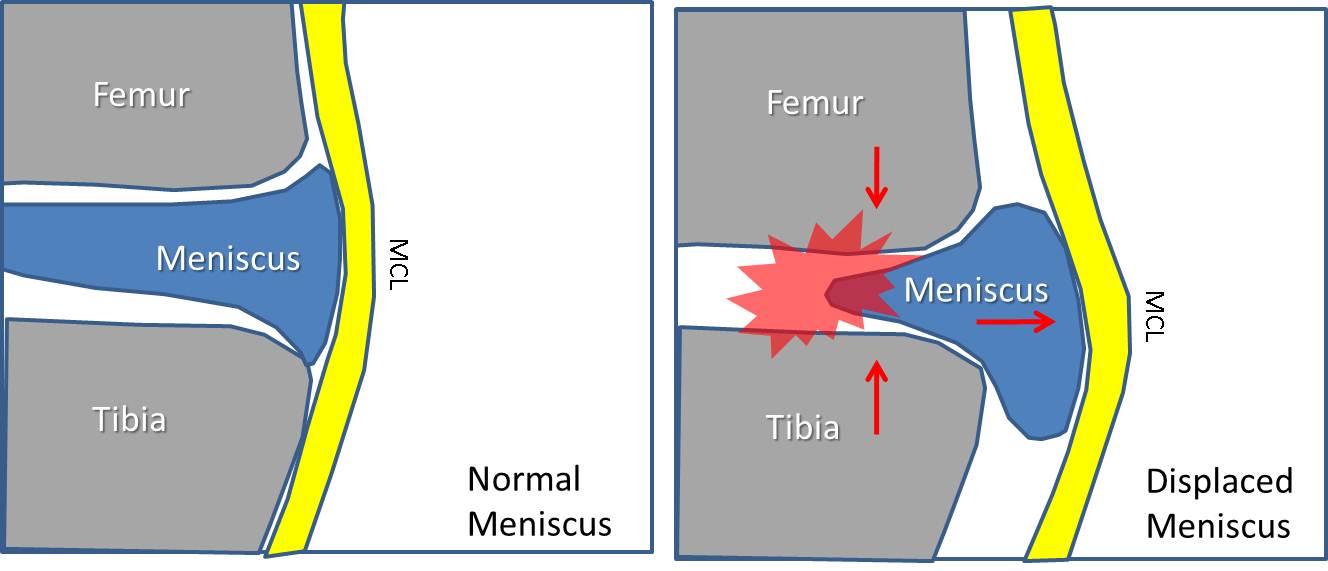Regenexx has recently added another tool to their regenerative medicine tool box: Adipose derived stem cells. As discussed in a prior blog, bone marrow derived stem cells are ideal for orthopedic application such as osteochondral defects and areas of degeneration in the knee, hip, ankle and thumb. Patients have the ability to use their own mesenchymal stem cells through the Regenexx procedure. Regenexx therapy has been demonstrated to be safe.
Adipose derived stem cells offer structural support to areas of instability. A case in point is when a patient’s meniscus is reduced in size either through degenerative processes or through a surgical procedure (menisectomy). The reduction in meniscus size results in laxity of the collateral ligament and a change in the knee alignment. This is depicted in the illustration below.
The loose collateral ligament and the reduced meniscus size often result in the meniscus being displaced outwardly(being spit out) In this non-anatomical position the meniscus cannot perform its function as a shock absorber thereby exposing the cartilage to excessive forces and potential degeneration.
Prolotherapy is used to treat loose ligaments. Bone marrow derived cells are placed in areas of cartilage defects or excessive wear. When the meniscus is small and extruded outwardly, adipose derived stem cells are used in a structural capacity. They are injected through ultrasound or x-ray guidance in such a fashion as to push the meniscus inwardly returning it closer to its true anatomical position.
The Centeno-Schultz Clinic offer patients a number of regenerative therapies including prolotherapy, platelet concentrates, bone marrow and adipose derived stem cells injected under ultrasound or x-ray guidance.
